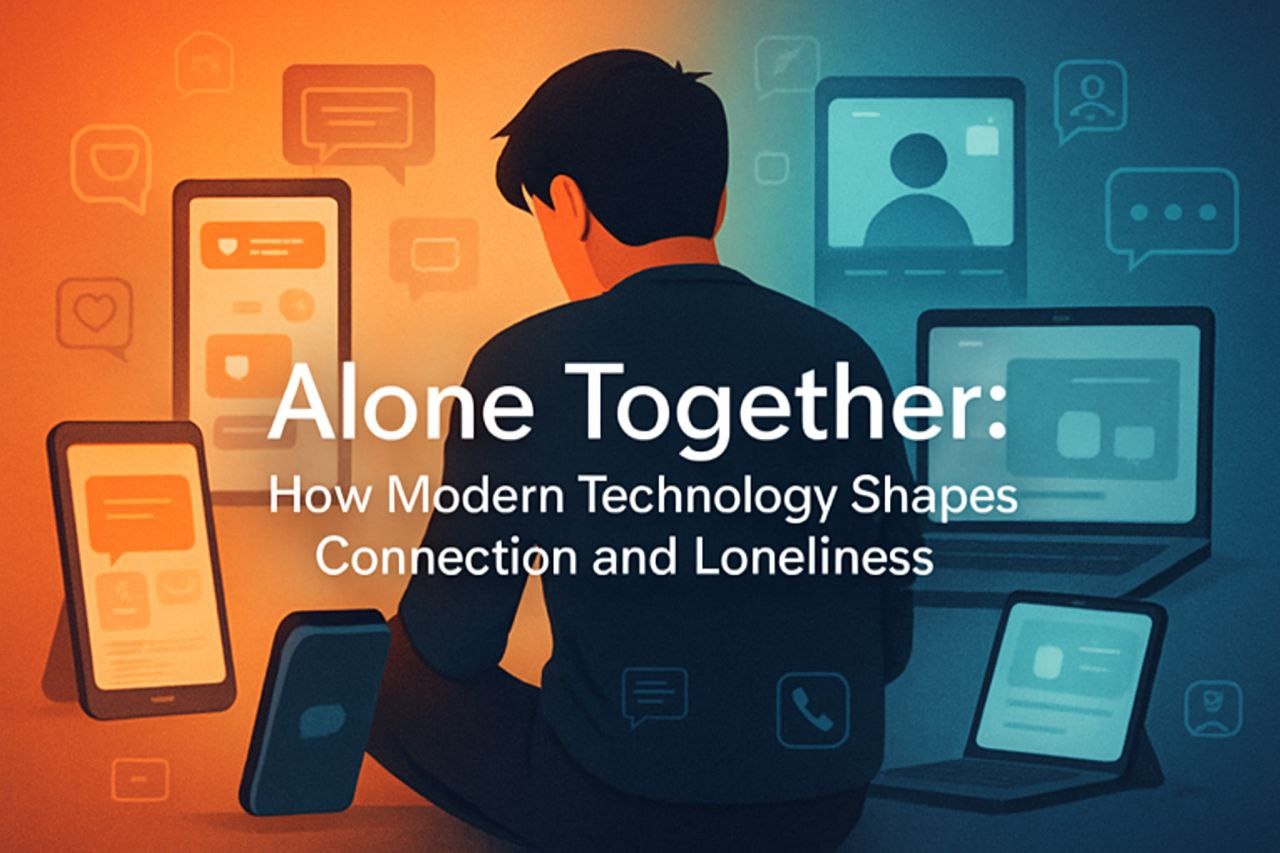Alone Together: The Paradox of Modern Connectivity

"In a world of endless noise, the greatest gift we can give is presence. Let us see, listen, and truly connect." ~ Adarsh Singh
The Connectivity Paradox
In the 21st century, the world is more connected than ever before. A message can travel across continents in seconds, video calls allow us to see loved ones thousands of miles away, and online communities offer spaces for support, creativity, and collaboration.
Yet, despite these unprecedented means of connection, many people report feeling lonelier, more isolated, and more unseen than at any previous time in history.
"We are connected by wires and signals, yet the heart can still feel miles apart." ~ Adarsh Singh
Technology has made reaching out easier, but it has not necessarily made us feel closer. The very tools designed to foster connection often act as substitutes for it, leaving emotional gaps that digital interactions cannot fully bridge.
The Illusion of Connection
Social media platforms, instant messaging apps, and virtual meeting spaces create a constant stream of interactions. We can check in on friends, scroll through global news, and witness celebrations and achievements of people we may never meet.
However, these digital interactions often provide the illusion of closeness rather than its substance.
The curated nature of online life worsens this. Platforms highlight moments of joy, success, and beauty while filtering out mundane or difficult realities. When we consume these “highlight reels,” we compare ourselves to the idealized lives of others, creating feelings of inadequacy, invisibility, or social isolation.
"Scrolling endlessly through other lives can make our own life feel invisible." ~ Adarsh Singh
Moreover, digital communication is often transactional rather than relational. A like, comment, or emoji cannot replicate the warmth of a friend’s eyes, the comfort of a hand on your shoulder, or the resonance of shared laughter.
When Presence Becomes Absence
Ironically, many experience digital loneliness even when physically surrounded by others. Families may sit together while each person is absorbed in their phone. Friends may gather for coffee but spend more time capturing the moment than enjoying it.
This phenomenon is called “absent presence”, physically there, mentally elsewhere.
"True connection is felt in silence, in presence, not just in pixels." ~ Adarsh Singh
This has profound implications for intimacy, empathy, and mental health. Excessive screen time, especially on social media, correlates with higher anxiety, depression, and loneliness. Even positive online interactions cannot fully replicate the multisensory and emotionally nuanced experience of in-person connection.
The Behavioral Trap
Modern connectivity encourages behaviors that inadvertently amplify isolation. Endless scrolling, frequent notifications, and the pursuit of digital validation can become addictive, pulling attention away from the present moment.
The culture of “highlight reels” shifts priorities. Instead of savoring shared moments or meaningful conversations, there is pressure to document, post, and perform life for an audience. The pursuit of likes and approval can replace genuine curiosity about others’ thoughts, feelings, and experiences.
"We often mistake attention for affection, engagement for empathy." ~ Adarsh Singh
Digital Communities: A Double-Edged Sword
Technology also has profound potential to create meaningful connections. Online communities provide support for those who feel marginalized, isolated, or geographically distant. People with rare conditions, minority identities, or niche interests can find understanding and solidarity online.
Mental health resources, peer groups, and educational platforms have transformed accessibility, enabling people to connect in ways previously unimaginable.
Yet, even in supportive contexts, interactions mediated by screens can remain superficial, temporary, or context-limited. Texts, images, or video clips rarely capture the full spectrum of human expression.
"Technology is a bridge, not the river; it can carry us across, but we must walk the path ourselves." ~ Adarsh Singh
The Human Cost
The erosion of deep, meaningful connection has implications far beyond individual loneliness. Communities thrive on empathy, trust, and shared experiences. When relationships are mediated by devices, empathy can weaken, misunderstandings increase, and social cohesion can erode.
Children and adolescents are particularly vulnerable. Growing up with digital connectivity as the norm can normalize shallow interactions and hinder the development of social-emotional skills. Adults, too, may struggle with intimacy, presence, and emotional availability when their relational habits are shaped by technology-first communication.
Seeking Balance
The question is not whether technology is harmful, it can be transformative, but whether it is used intentionally to cultivate connection rather than mask absence. Mindful use of technology can restore balance.
Practical steps include:
Set boundaries for screen time, particularly in shared spaces.
Engage in technology-free moments with friends or family.
Use digital tools to enhance, not replace, in-person interactions.
Cultivate presence and active listening, even in virtual spaces.
Recognize the difference between performing life for an audience and sharing life for connection.
"Connection is not found in the feed, but in the moments we truly share." ~ Adarsh Singh
Cultivating Genuine Connection
Human connection requires vulnerability, empathy, and presence, qualities that cannot be fully digitized. A true relationship thrives on attention, active listening, and shared experience. Technology can facilitate these, but it cannot substitute for them.
Small acts of presence, the shared silence, the empathetic gaze, the honest conversation, nurture connection. To reclaim authenticity in the digital age, we must consciously choose connection over convenience, empathy over performance, and presence over distraction.
"To be truly seen is to be truly known; technology can guide us there, but it cannot walk the path for us." ~ Adarsh Singh
Moving Forward
The paradox of modern connectivity challenges us to rethink what it means to be connected. Are we using technology to deepen relationships, or are we allowing it to fill the spaces left by neglected intimacy?
Awareness is the first step. Mindfulness, intentionality, and reflection help us leverage the power of technology without falling into isolating traps. Communities, families, and individuals can cultivate spaces, both online and offline, that prioritize authenticity, empathy, and meaningful presence.
"In the end, connection is a choice. Presence is a practice. Let us choose wisely." ~ Adarsh Singh
Thu Sep 11, 2025
